Site Links
Howdy, Stranger!
It looks like you're new here. If you want to get involved, click one of these buttons!
Quick Links
Categories
Please review the site Rules, Terms of Service, and Privacy Policy at your convenience. Rules, TOS, Privacy
Get familiar with the reaction system: Introducing the Reaction System
FTRS MTM and Bass Bin
This design/build has been going on over 6 months, but I thought I'd share it here in pieces.
I bought a pair of the TangBand W4-1320SIF mid-woofers a long time ago, and enjoyed them near field on my desktop, but always saved them for something better. Early this year, another pair came up on the forums, and the game was on. Decided to use a Fountek NeoCD 3.0 from a Mini-Statement tear down, and the top was set for a reasonably high-end MTM.
Name = Fountek Tangband RS = FTRS speaker
Decided to make a kerfed baffle wide radius with hardwood tops and bottoms.
Kerfing was really not that hard. I think I will do it again. Solid SQ benefits.
test kerfed piece - 18mm baltic birch
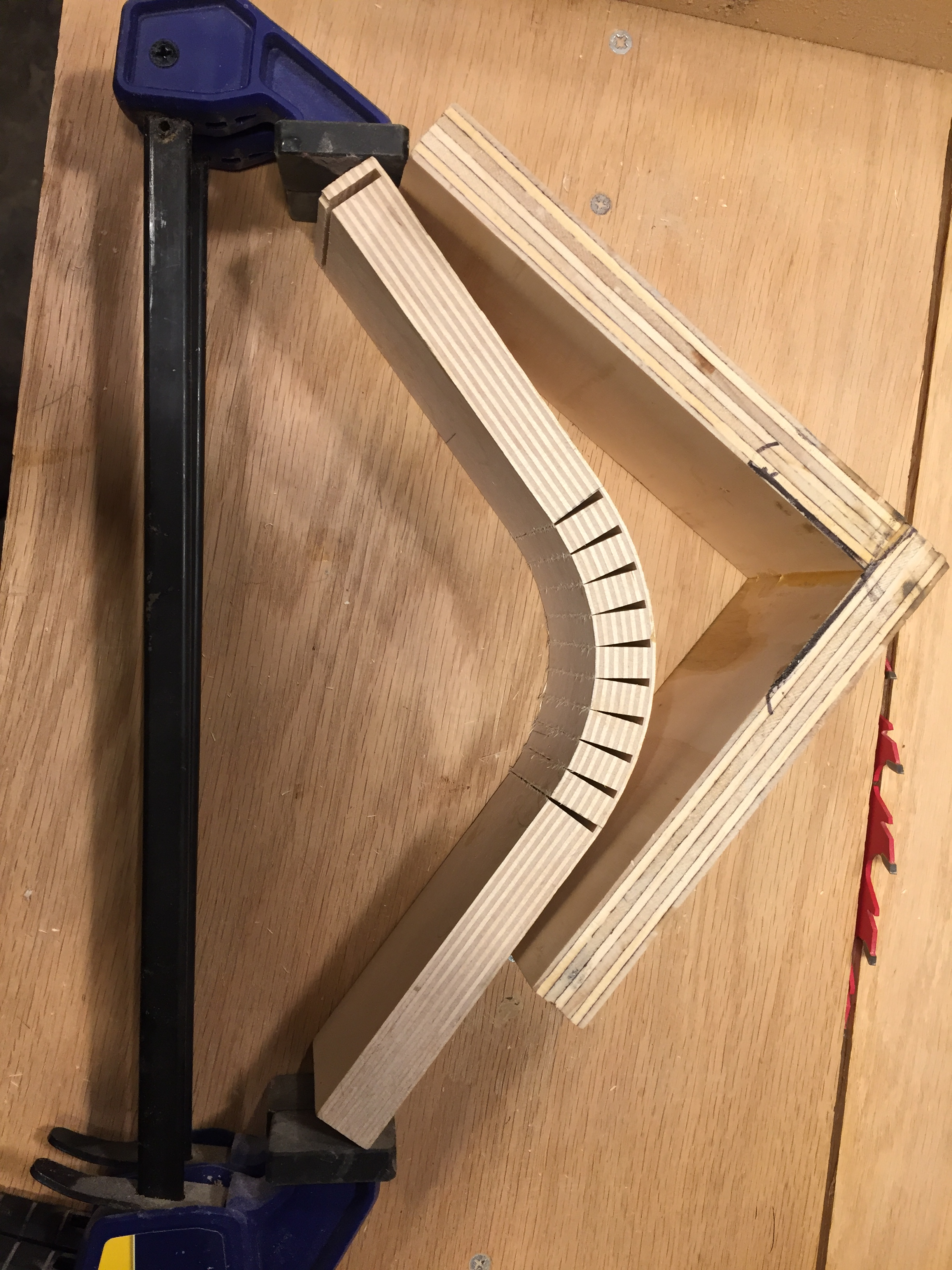
Baffle and 2 sides piece
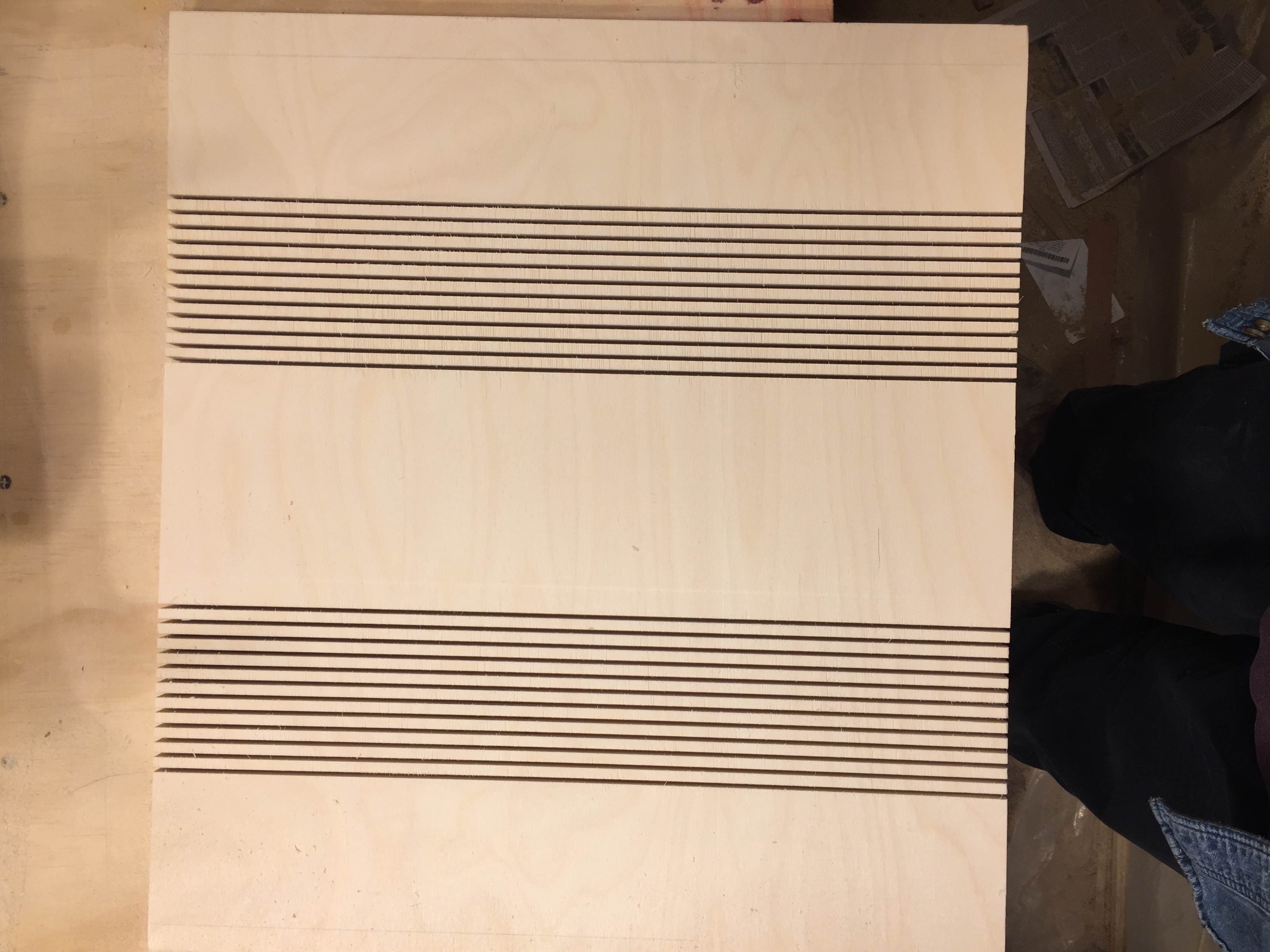
Glue up- I locked the baffle down to the table, used 90 degree pieces clamped to the sides.
Came out pretty good, but not perfect. I did like using Gorilla Glue to fill the kerfs.
Very, very strong once it had dried.
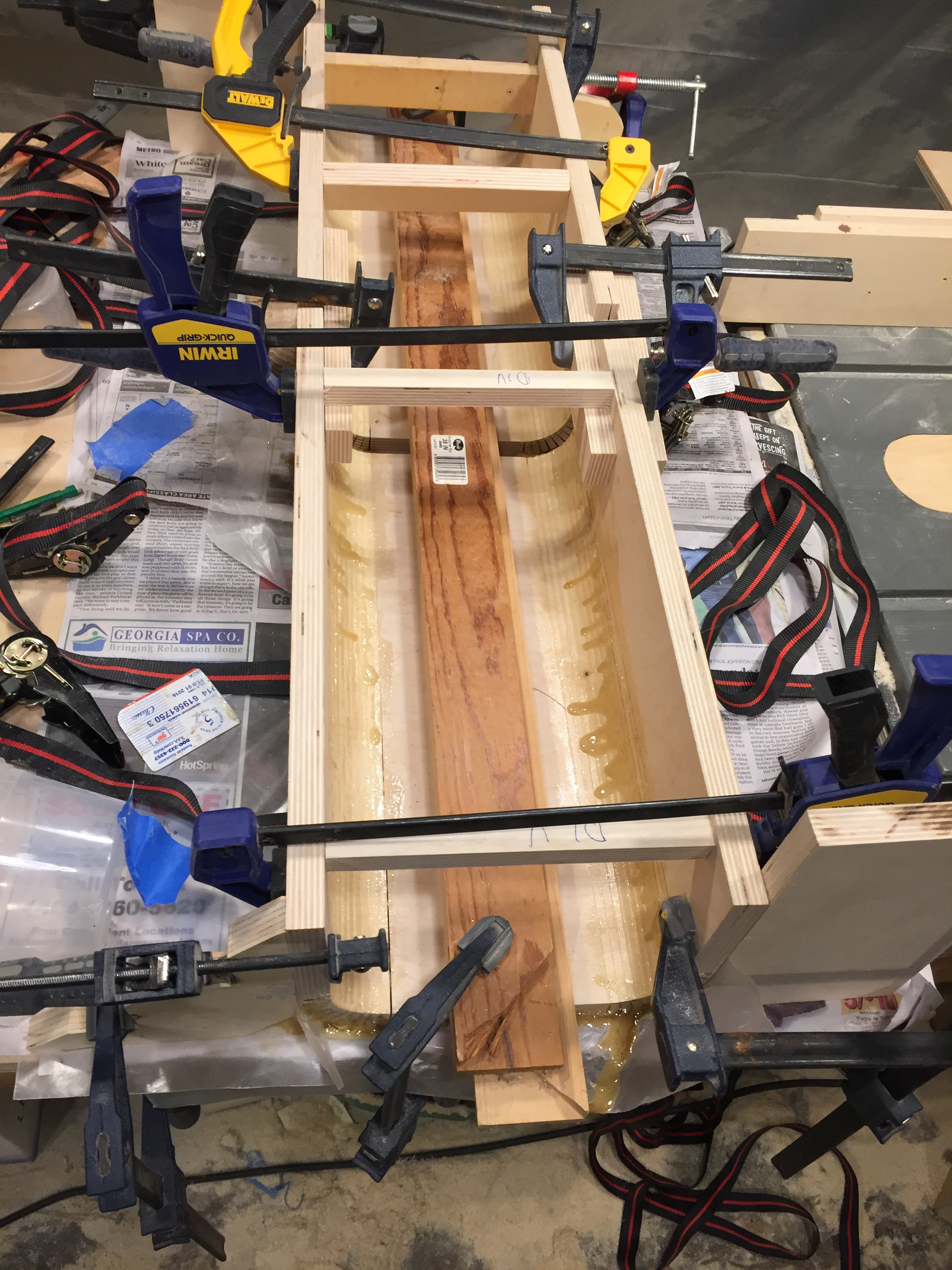
The sides came out a little uneven.
After a some thought, I realized that I could clamp them to a 90 degree edge and run them through the table saw.
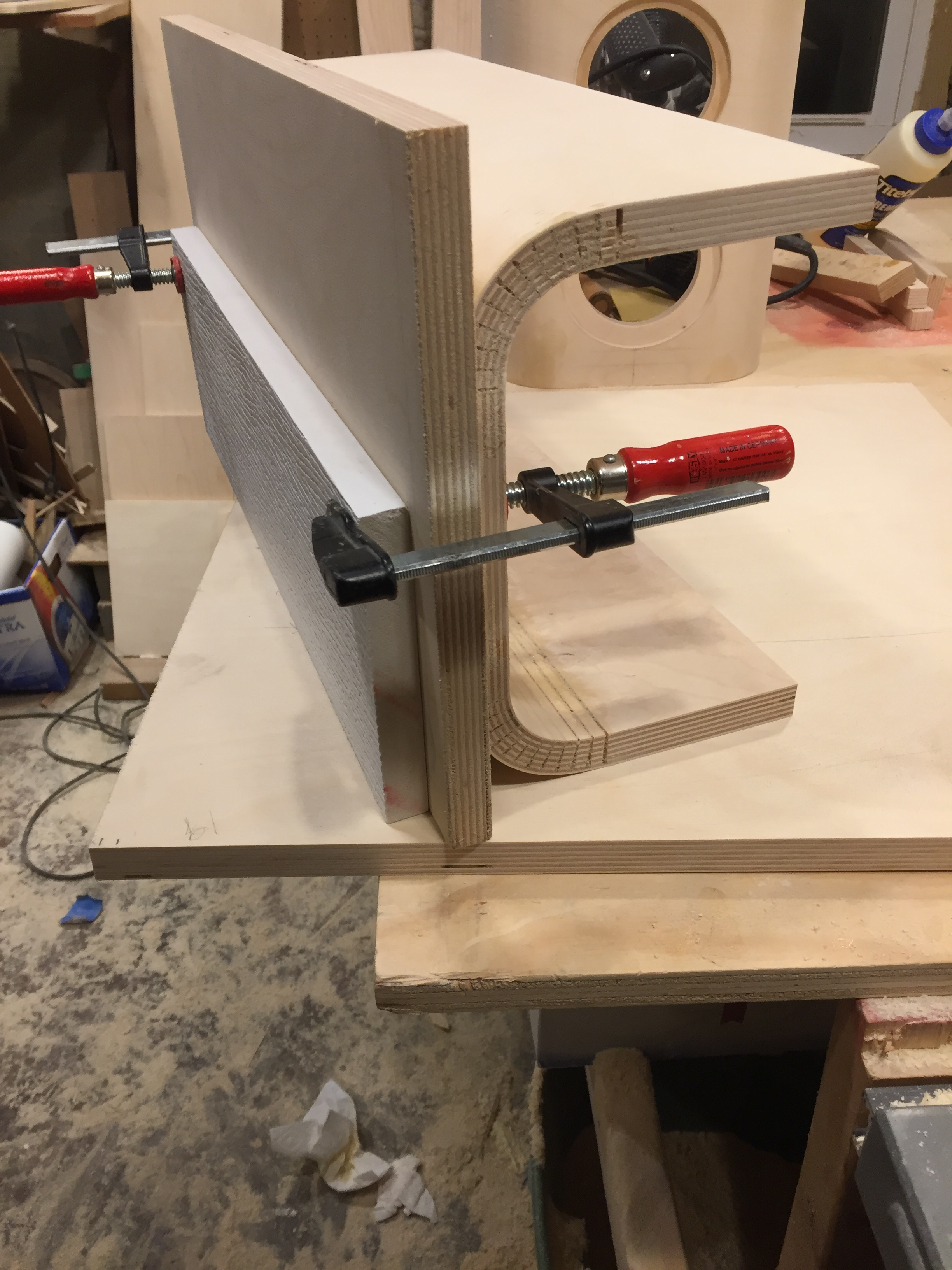
worked perfectly!
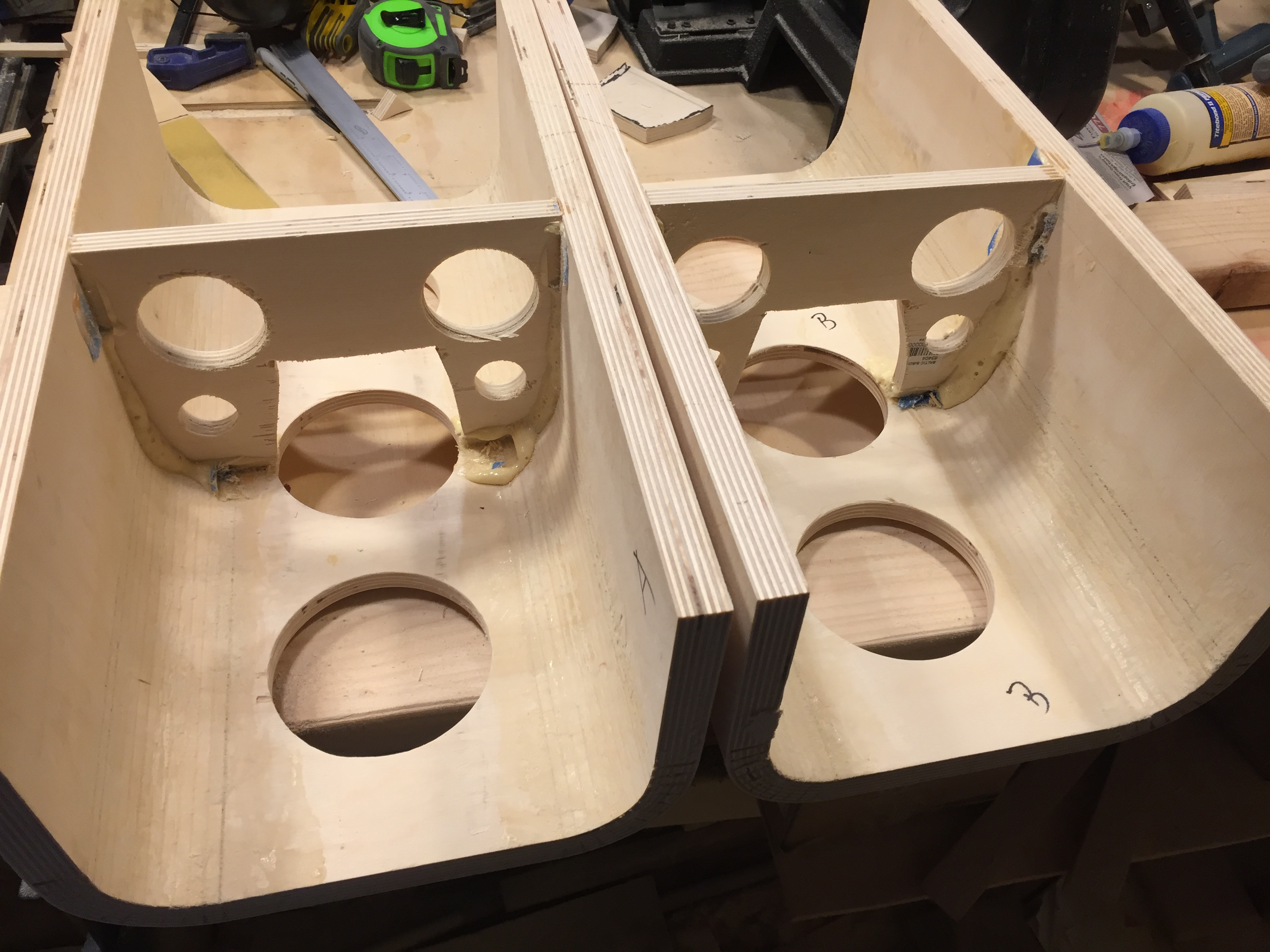
more tomorrow.
I bought a pair of the TangBand W4-1320SIF mid-woofers a long time ago, and enjoyed them near field on my desktop, but always saved them for something better. Early this year, another pair came up on the forums, and the game was on. Decided to use a Fountek NeoCD 3.0 from a Mini-Statement tear down, and the top was set for a reasonably high-end MTM.
Name = Fountek Tangband RS = FTRS speaker
Decided to make a kerfed baffle wide radius with hardwood tops and bottoms.
Kerfing was really not that hard. I think I will do it again. Solid SQ benefits.
test kerfed piece - 18mm baltic birch

Baffle and 2 sides piece

Glue up- I locked the baffle down to the table, used 90 degree pieces clamped to the sides.
Came out pretty good, but not perfect. I did like using Gorilla Glue to fill the kerfs.
Very, very strong once it had dried.

The sides came out a little uneven.
After a some thought, I realized that I could clamp them to a 90 degree edge and run them through the table saw.

worked perfectly!

more tomorrow.
But Chahly - Stahkist don't want speakers that look good, Stahkist wants speakers that sound good!







Comments
Really, really worried. Figured that worst case, I might have to veneer over the cracks and bumps.
Unbelievable, a bit of 120 sanding followed by 220 cleaned it all up. Solid white oak top and bottom.
I love the look of fumed oak with Danish oil (Stickley finish). Put the boxes in a tube with some 5% ammonia for about 48 hours. Here is the result compared with "virgin" veneer.
The real magic happens when the oil goes on. Love the contrast between the veneer and the solid oak ends.
And in short order, started to work on the crossover.
I like your older Fluke 80X0 series meter.
So I'm building this MTM with 2 W4-1320SIF mid woofers, and thinking that somehow I'm going to get accepable bass from them, even though the Fs=75. After the boxes had been built (all the work detailed above), foro some reason I thought I'd check the Unibox model again, only come to find that some "doofus" had entered 6mm for Xmax! (obligatory WTF moment).
Well, I'd gone to far to turn back now, so I needed a "bass bin" for the MTM "top".
I had Qty 6 of the RS180s on the shelf, so that was decided. I'm a new fan of MLTLs, so I designed a folded MLTL with 2x of the RS180s on each side. When I got the specifics laid out in HornResp, I realized that only 1 internal divider could change the basic BR box to a MLTL.
which became the MLTL
Unibox showed goodness in the basic design:
as did HornResp for the same volume and tuning.
Since I had 2 almost identical boxes, I ran a bunch of measurements.
Not a whole lot of difference. The MLTL wavelet seemed a bit cleaner 200-400Hz (probably due to the stuffing), and possibly extended a tad lower than the BR.
Just for grins, here is the close miked MLTL port FR comparing an unstuffed TL line (in red) versus a stuffed line (in blue)
It took me long time to dial in the crossover, got many versions that sounded good, and measured pretty good, but had some hills or valleys that I didn't like. All of the versions really sounded pretty good, but nothing to get excited about. I DID find that if I didn't rolloff the W4-1320s around 200Hz or so, they would start sounding stressed when I cranked it a bit. And I found that I liked the Fountek NeoCD 3.0 a lot when I had a proper 3rd order HP on it.
Something funny happened one day - the speaker "came alive" - after months of listening, suddenly I really liked them, and the sound image was very wide and deep. Of course, I kept that version!
Seems like the polars looked very good also, probably due to the large radius baffle.
Bottom line, these are my first real reference speakers from scratch.
Smooth and strong from deep bass to treble. They handle all my stress tracks without any artifacts. <grin>
FR (does not include bass bin)
Distortion
Polar
I hope I get to hear your project sometime. They look fantastic and I know how good those TB W4's sound!
Yikes! Do I have a problem? What might I do to correct this? The spike is about 2.5Khz above the NeoCD Fc.
Many thanks for the kind words!
Hope to meet some of y'all in person sometime.
re: W4-1320SIF
I tore down my pair of mini-statements because I couldn't stand that W4-1337 anymore.
I bought the 1320s years ago on a sale, and used them full range on my desktop for a year or so.
Frankly surprised how clean, powerful and detailed they can be when used with highish HP.
I didn't want to admit it, but I didn't like the NeoCD in the mini-statements either, but didn't really know why.
I found that using a proper 3rd order crossover on the NeoCD really opened it up. It had been sounding stressed
in the min-statements. As usual, you don't know how a driver really sounds until you play with crossovers for a while.
At several points in the crossover process, I was using several extra components on each crossover, but things came together and I was able to achieve minimal component counts and hit the responses I needed.
-Don
Iowa is considerably farther, sorry...
Yeah, I gotta assume that this was some momentary glitch in Omnimic, since it doesn't appear in any other FR measurements. But there it is in the 0 degree polar FR.